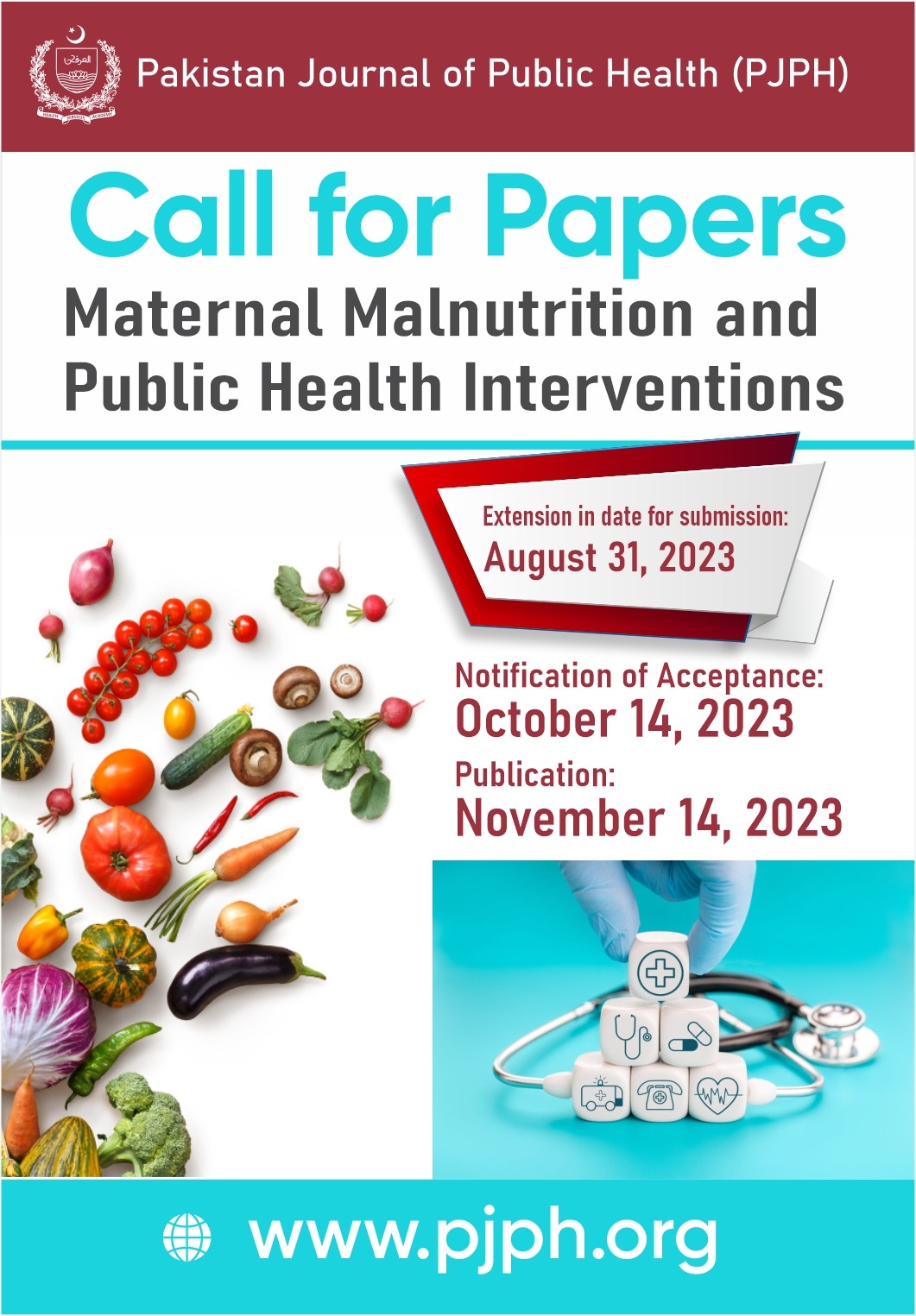An AN EPIDEMIOLOGIC ALANALYSIS OF LABORATORY CONFIRMED CASES OF CHIKUNGUNYA, PAKISTAN, 2016-2018
DOI:
https://doi.org/10.32413/pjph.v9i3.432Keywords:
chikungunya, age group, temperature, PakistanAbstract
Background: Chikungunya is a vector-borne disease that is spread by the mosquito Aedes aegypti and Aedes albopictus. Disease mostly occurs in Africa, Asia and the Indian subcontinent. Recent outbreak of chikungunya was reported in 2017 in Karachi, Pakistan, after which sporadic cases were reported from different areas of Pakistan. There are very limited demographic data available for chikungunya in Pakistan and therefore, further information is required. The current study will provide latest information to assist public health professionals and policy makers in order to provide effective management of cases by means of appropriate resource.
Methods: In this cross sectional study, information regarding 750 laboratory confirmed cases from Dec 2016 to Apr 2018 were collected from the virology laboratory, NIH. Data regarding age, sex, reporting facility, district and province were collected. Data entry and cleaning was done in Microsoft excel and descriptive analysis using epiInfo. The data were grouped, tabulated and represented graphically while geographical location of the cases was mapped.
Results: A total of 403(53.73%) cases were male and 347 (46.27%) female with an age range from 0.6 to 80 years and the mean age was (32.5+- 17.5). The most affected age group was 20 to 29 Years. Sindh remained the most affected province with 494 (65.87%) cases reported followed by KP with 167 (22.27%) cases. The highest number of cases [148(19.7%)] were reported in May 2017.
Conclusion: Provision and sharing of accurate and timely data can reduce the risk and spread of the disease.






